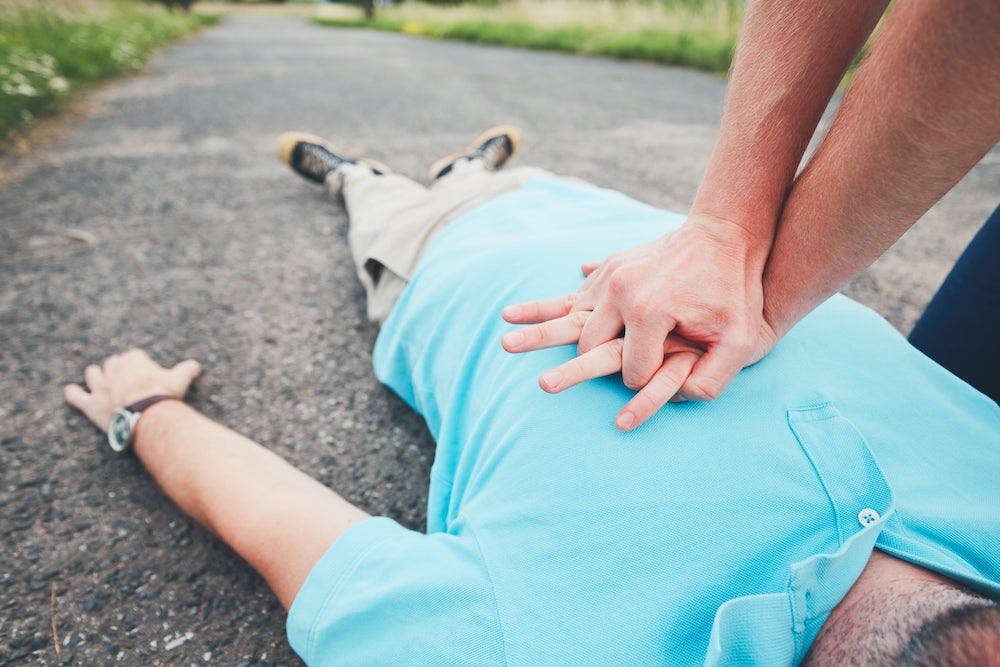
2024-07-12T16:54:51
Sunscreen Travel Tips
- Dermatology
April 23, 2019 | Family Medicine

What do you do when you see someone who collapses or can’t breathe? First, ask if he or she needs help. If the answer is yes, or if the victim doesn’t respond, call 911 immediately. Send someone to look for an AED if possible.
Next, lie the person down on a flat surface with his or her head tilted back to open the airway.
Listen for breathing sounds for 10 seconds; if you don’t hear breathing, start CPR by following these steps:
If breathing does not restart, begin rescue breaths.
NOTE: The American Heart Association (AHA) says that even people who are not trained in CPR should still perform compressions but skip rescue breathing, a method called hands-only CPR.
Continue until an AED or emergency services arrives, or if you become too exhausted to continue performing CPR.
It can be hard to stay calm when a loved one has a health emergency. Our bodies release stress hormones when danger strikes, which can lead to panic. Try these tips to remain calm in emergencies:
If you want to learn more about emergency preparedness and first aid, look for classes near you. Clinics, fire departments, police stations and local health departments often offer classes to the public.
“Cardiopulmonary Resuscitation (CPR). First Aid.” Mayo Clinic. https://www.mayoclinic.org/first-aid/first-aid-cpr/basics/art-20056600.
“CPR Steps.” American Red Cross. https://www.redcross.org/take-a-class/cpr/performing-cpr/cpr-steps.
“Six Steps for Keeping Calm in an Emergency.” HopingHealth. https://www.hopinghealth.com/six-steps-keeping-calm-emergency/.
“Staying Calm During an Emergency Can Save Lives.” The Huffington Post. https://www.huffpost.com/entry/staying-calm-during-an-em_n_7749812.
WRITTEN BY:
The Live Better Team


2024-07-12T16:54:51

2024-07-02T11:42:04

2024-07-01T13:49:28

2024-06-21T14:29:51
This information is not intended to replace the advice of a medical professional. You should always consult your doctor before making decisions about your health.